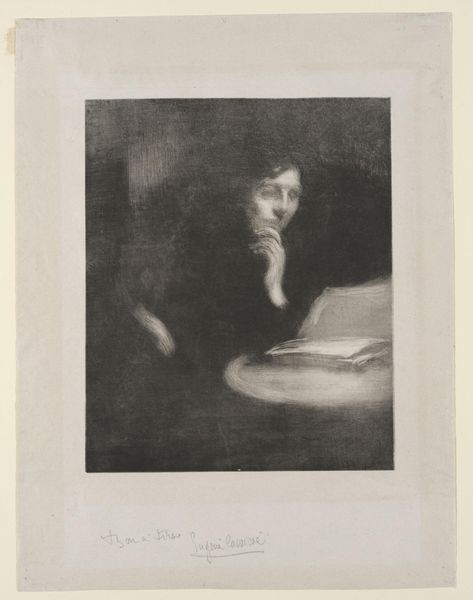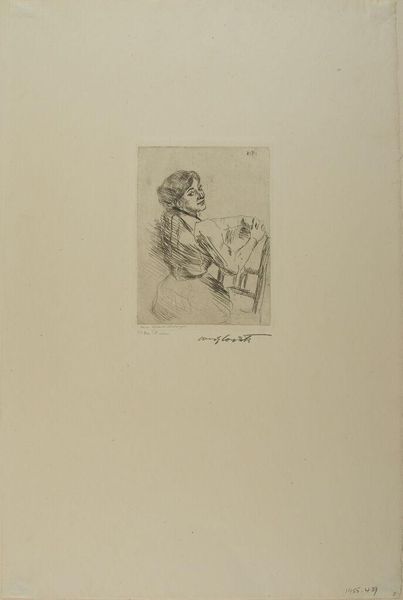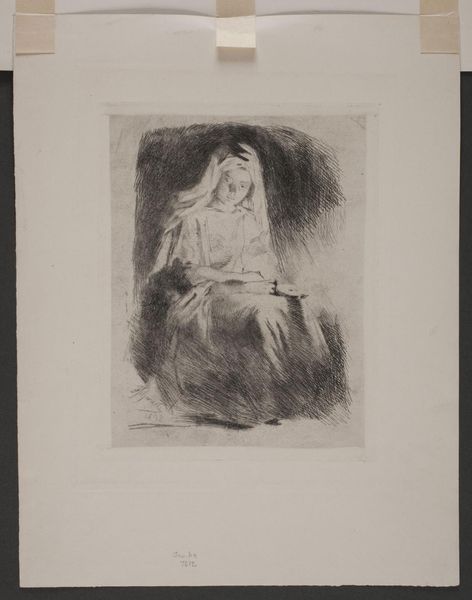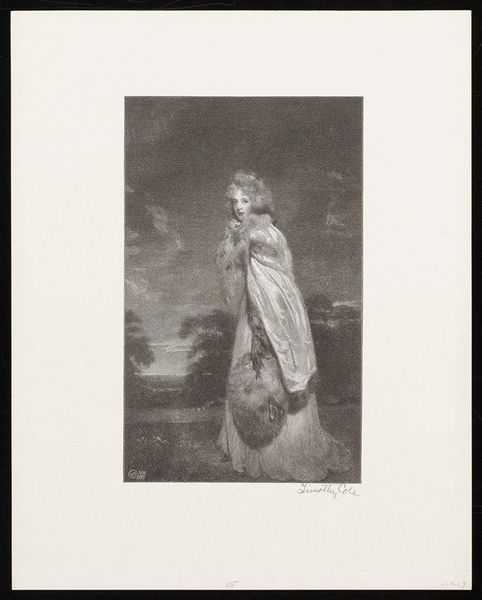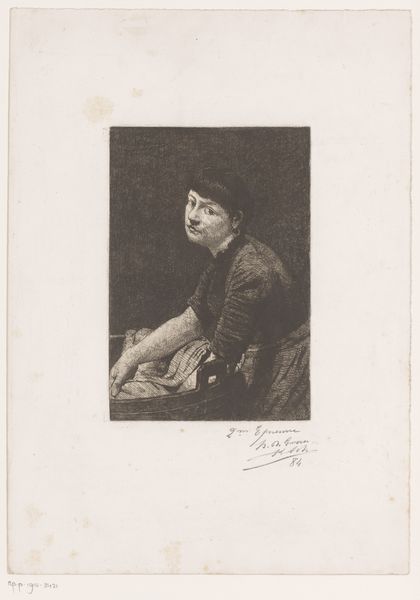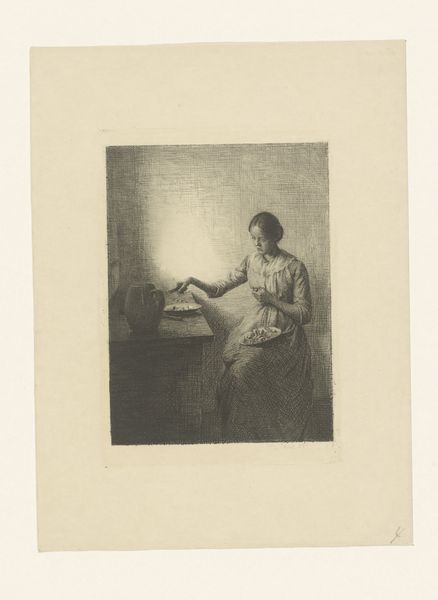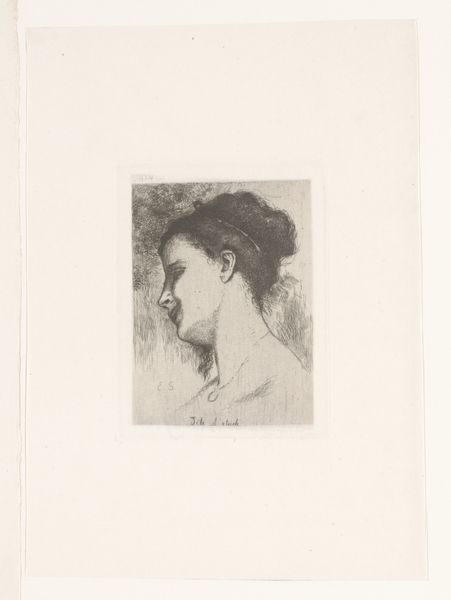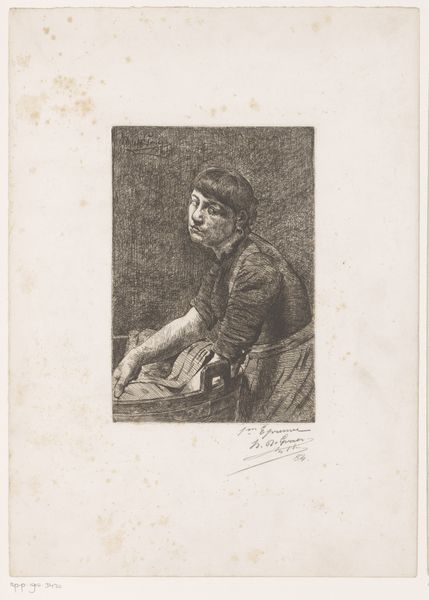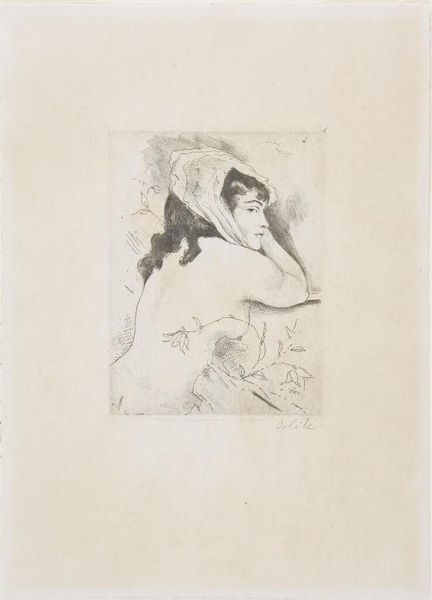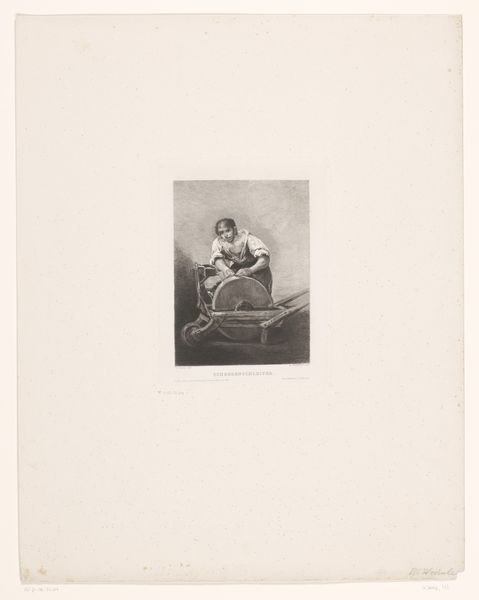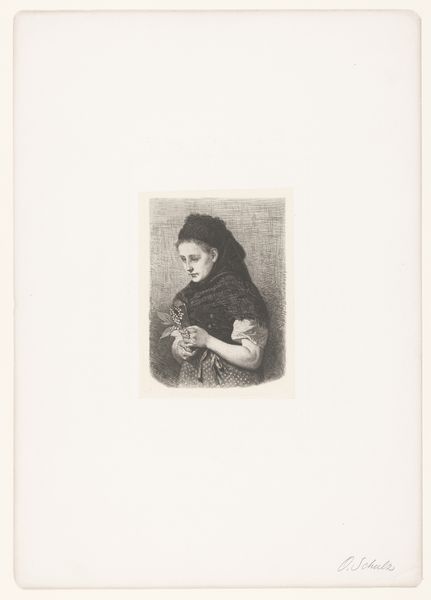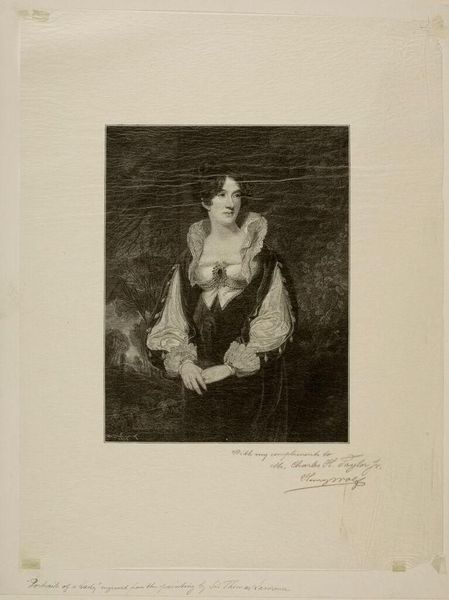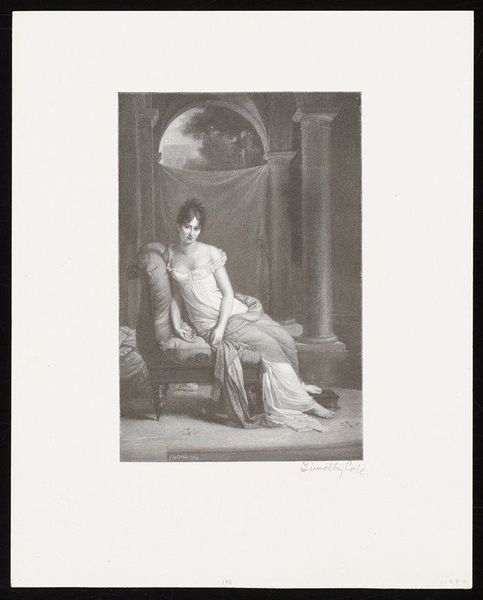
Dimensions: 6 5/8 x 5 3/16 in. (16.83 x 13.18 cm) (image)11 3/4 x 9 in. (29.85 x 22.86 cm) (sheet)
Copyright: No Copyright - United States
Curator: This is a wood engraving by Timothy Cole, completed in 1910, after a painting by Aman Jean, titled "Aman Jean's Wife." It’s currently housed here at the Minneapolis Institute of Art. Editor: My initial reaction is of understated elegance. The muted tones and the woman's profile evoke a sense of quiet dignity. It almost feels like looking at a memory. Curator: Cole was quite renowned for his reproductive engravings; this print demonstrates how artworks circulated among a broader public in the early 20th century. He's acting almost like a printing press, disseminating Jean’s art. Editor: Absolutely. And what’s fascinating to me is the choice of the profile. It speaks to a long history of portraiture, of course, but it also allows us to project onto her a certain mystique. The obscured eyes almost become a screen for our own interpretations. I also feel like the symbol of the hands as a vessel carries a lot of psychological weight, a universal gesture we understand through history, from prayers to grief. Curator: That symbolic resonance definitely connects with the context in which Cole created this piece. The rise of print media enabled art to be accessible in ways unimaginable before, but it also raises questions about artistic authorship and authenticity. We often overlook figures like Cole when thinking about artistic movements like Impressionism. But here, in Cole's copy, we understand that movements take on a new, powerful context. Editor: That's a compelling point. What do you think of the original image it's a reproduction of, knowing that Cole here attempts a mediated rendering of it? Curator: Given its purpose, the work operates within specific cultural frameworks. This image serves as evidence for understanding the impact and power of print culture. This portrait has many meanings for various viewing demographics. It becomes part of the broader cultural landscape and an important symbol of access to artistic traditions and cultural narratives. Editor: I hadn’t considered that dynamic previously, but this portrait seems to also symbolize that intersection of traditions and shifting access that continues to shape our encounters with visual culture today. Thank you for the context!
Comments
No comments
Be the first to comment and join the conversation on the ultimate creative platform.
